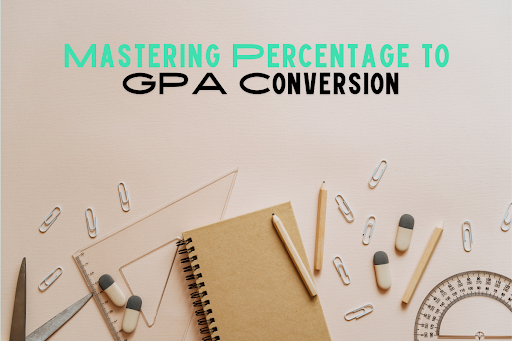Applying to college can be a tough task, but keeping track of when applications open can be the key to your success.
Did you know that the application process can be a chance to challenge yourself and push beyond your limits? It requires dedication, hard work, and perseverance, but the rewards can be life-changing.

Excel in IELTS with India’s Top Online Coaching
Leap has helped more than 1 Lakh students achieve 7+ IELTS band.
Missing out on these deadlines can lead to missed opportunities, so it’s crucial to stick to the deadlines set by the institutions.
With the right mindset and preparation, you can maximise your chances of getting admitted to your desired program and embark on a journey of personal and academic growth.
Moreover, it also offers the chance to adjust to your new environment before the academic year begins.
In case you encounter some unfamiliar words while reading the blog, here are a few terms to keep in mind:
| Terms | Definitions |
| Early Action | Apply early and get your admission decision by December, but you have until May 1st to decide. Good for top choices. |
| Early Decision | Similar to Early Action, but binding. If you get accepted, you have to attend that college. Ideal for your dream school only. |
| Regular Decision | Standard admissions process. You’ll receive your decision by April 1st at the latest |
| Common Application | It is a widely used college application platform that allows students to apply to multiple institutions. |
| Coalition Application | is a college application platform that allows students to apply to multiple institutions. |
Have you ever wondered which intake would be the best for you? It’s the September intake!
This is because the fall season is the start of the academic year in many countries like the United States, Canada, Australia, Ireland and the United Kingdom and it allows students to have a fresh start at the beginning of the year.
Admission Timeline for Graduate
Applying for the September intake for undergraduate programs offers benefits such as avoiding the rush of applications, greater program choices, and access to scholarships and financial aid opportunities.
It can be a smart choice for students seeking to maximise their chances of being admitted to their desired program.
The admission timeline for a UG (Undergraduate) program in the September intake for universities abroad can vary slightly depending on the specific university and country.
Here’s a general breakdown to give you an idea:
Early Stages (6-12 months before application deadline):
Step 1: Start researching universities and programs that align with your interests. Explore university websites, rankings, and program details.
Step 2: If required by your chosen universities, register and take standardised tests like SAT or ACT well in advance. Score deadlines can be earlier than application deadlines.
Step 3: Prepare for and take English language proficiency tests like IELTS or TOEFL if English isn’t your native language.
Note: Scores typically have validity periods, so plan accordingly.
Step 4: Consider relevant extracurricular activities, volunteer work, or achievements that showcase your skills and interests.
Step 5: Research tuition fees, living expenses, and scholarship opportunities. Start exploring financial aid options to cover the costs associated with studying abroad.

Excel in IELTS with India’s Top Online Coaching
Leap has helped more than 1 Lakh students achieve 7+ IELTS band.
Mid Stages (3-6 months before application deadline):
- Contact Universities: Reach out to universities you’re interested in with specific questions about the program, application process, or any additional requirements.
- Request Letters of Recommendation: Identify teachers or mentors who can write strong letters of recommendation highlighting your academic abilities and potential.
- Draft Application Essays: Start brainstorming and writing application essays or personal statements that showcase your motivations, goals, and suitability for the program.
Late Stages (1-3 months before application deadline):
- Gather Documents: Ensure you have all required documents like transcripts, test scores, essays, letters of recommendation, and financial documents ready for submission.
- Prepare Online Application: Carefully complete the online application forms for each university, ensuring all information is accurate and complete.
- Meet Deadlines: Submit your application packages well before the deadlines set by each university. Deadlines can vary significantly, so pay close attention.
Explore all countries
Post Application (After Application Deadline):
- Wait for Decisions: Universities will review applications and send out acceptance/rejection decisions. This process can take several weeks or even months.
- Accepting an Offer: Compare university offers based on program fit, costs, and location. Choose the best fit, accept the offer, and follow any additional instructions from the university.
- Visas and Permits: Start researching and applying for student visas and any other permits required to study in your chosen country.
Remember: Always refer to the specific university websites for the most up-to-date information on their application deadlines, requirements, and any specific procedures for international students.
Admission Timeline for Post-Graduate
Applying for a postgraduate program in the September intake can offer several advantages, such as access to a wider range of courses, more scholarship opportunities, and higher employability prospects.
The admission timeline can vary depending on the university and country you’re applying to, but starting your research and preparation at least 6-12 months before the application deadline is recommended.
Here’s a breakdown with estimated timeframes, keeping in mind some key variations for popular study destinations:
Early Stages (6-12 months before the application deadline):
Step 1: Start researching universities and programs that align with your interests. Explore university websites, rankings, and program details. Focus on this from December to May.
- Step 2: US, Canada: Many programs, especially in STEM fields, require GRE scores. Register and take the tests well in advance. Aim for April or June deadlines. GMAT scores might be needed for business programs.
- UK, Australia: GRE/GMAT scores are less common, but some programs might require them. Check with specific universities.
Step 3: Prepare for and take English language proficiency tests like IELTS or TOEFL if English isn’t your native language. Scores typically have validity periods, so plan accordingly. Aim to take them by May.
Step 4: Highlight relevant work experience, research projects, or achievements that showcase your skills and suitability for the program. Build your resume or CV throughout the year.
Step 5: Research tuition fees, living expenses, and scholarship opportunities. Start exploring financial aid options to cover the costs associated with studying abroad.
Mid Stages (4-6 months before application deadline):
- Contact Universities: Reach out to program coordinators or professors at universities you’re interested in with specific questions about the program, research opportunities, or any additional requirements. This is especially important in countries like the US and Canada, where faculty involvement can strengthen your application.
- Request Letters of Recommendation: Identify professors, employers, or supervisors who can write strong letters of recommendation highlighting your academic or professional capabilities. Request them by June.
- Draft Application Essays/SOP: Start brainstorming and writing a strong Statement of Purpose (SOP) that showcases your motivations, research interests, career goals, and suitability for the program. This is crucial for all countries.
Late Stages (2-3 months before application deadline):
- Gather Documents: Ensure you have all required documents like transcripts, test scores (if applicable), SOP, letters of recommendation, resume/CV, and financial documents ready for submission.
- Prepare Online Application: Carefully complete the online application forms for each university, ensuring all information is accurate and complete. Pay close attention to program-specific requirements and deadlines. Be mindful that some countries like the US might have additional essay prompts.
- Meet Deadlines (Varies by Country):
- US, Canada: Applications for top universities often have deadlines as early as December – February. Aim to submit well before these deadlines to ensure consideration.
- UK, Australia: Deadlines are generally later, falling between March – July. However, some universities might have earlier deadlines for specific programs.
Post Application (After Application):
- Wait for Decisions: Universities will review applications and send out acceptance/rejection decisions. This process can take several weeks or even months.
- Accepting an Offer (Varies by University): If you receive offers, carefully compare them based on program fit, costs, location, faculty expertise, and research opportunities. Choose the university that best aligns with your academic and career goals. Once you decide, accept the offer and follow any further instructions from the university (typically by deadlines set by the university).
- Visas and Permits (Varies by Country): Start researching and applying for student visas and any other permits required to study in your chosen country. This process can take time, so begin as soon as you have your acceptance letter.
Remember: This is a general guideline. Always refer to the specific university and program websites for the most up-to-date information on their deadlines, requirements, and any specific procedures for international students.
What is a Common App?
Are you ready to take on the challenge of applying to multiple colleges and universities in the United States and around the world? Look no further than The Common Application!
This amazing non-profit organisation provides a streamlined online platform that simplifies the entire application process.
With The Common App, you can easily fill out a single application and submit it to numerous schools, saving you time and effort.
The platform includes sections for personal information, academic history, extracurricular activities, and essays, making it easier than ever to put your best foot forward.
The Common App dashboard helps you stay on top of your applications by providing:
- A clear overview of your progress
- Upcoming deadlines
- Required documents
This feature ensures that you don’t miss out on any critical deadlines and can submit your applications on time without any last-minute stress.
When does the common app open?
Starting your college application process can be nerve-wracking, but with the right approach, you can feel confident and prepared.
- The annual Common App application cycle typically begins on August 1st.
- It’s essential to keep a close eye on the deadlines for your desired schools.
- While early action or early decision programs usually have deadlines between November and December, regular decision deadlines generally fall around January 1st.
- Verify exact deadlines with each college you’re interested in.
- You can create a Common App account at any time and transfer your information to the new application cycle when it opens.
Starting early and staying organised shows initiative and can boost your confidence in presenting yourself well, thereby improving your chances of getting into your desired school.
How do you complete the CommonApp application?
- Start your application: Visit commonapp.org and click “Start your application.” Here, you’ll find instructions on creating an account and logging in. Alternatively, download the Common App mobile app to manage deadlines, request recommendations, and set reminders on the go.
- Choose your path: Select “First-Year Student” or “Transfer Student,” depending on your application type.
- Provide basic information: Enter your name, email, phone number, address, date of birth, and prospective enrollment year.
- Complete your profile: Fill out the requested details about your education, extracurricular activities, demographics, household information, and more.
- Gather recommendations: Add collaborators like teachers, counsellors, and others who will provide letters of recommendation or supporting documents.
- Explore your options: Search for and add colleges to your “My Colleges” list.
- Apply with confidence: Familiarise yourself with each college’s specific application requirements and follow them carefully during the submission process.
- Check your application status: Use the icons on your dashboard to easily track the progress of your applications. A green checkmark indicates a completed submission, a yellow circle shows applications in progress, and a red dash means a section is not required for that college.
- Don’t forget to submit! Meet the deadline by submitting all your application materials by 11:59 PM (local time) on the date listed in your Common App dashboard.
What is a Coalition Application?
The Coalition Application can be your ultimate resource to streamline the application process.
With this platform, you can apply to a diverse range of member colleges and universities using a single application, making the process much more accessible and manageable.
The application comes equipped with a variety of user-friendly tools and resources that help you stay organised and on track with your application.
When does the Coalition Application open?
- You can submit your applications through the Coalition App every year in either July or August.
- As early as ninth or tenth grade, you have the opportunity to initiate building your profile and gain an advantage.
- Your profile holds a major weightage of 70% in your applications to the schools that you are interested in.
- The main goal of the Coalition App is to enhance the accessibility of higher education for students who come from under-resourced and historically underrepresented communities.
- Your likelihood of being accepted into the college you aspire to attend can be improved by submitting your application through the Coalition.
- Check the member schools list to see if your college accepts Coalition applications.
Universities with their own Applications
Did you know that some universities create their own custom applications instead of using centralised systems like the Common App or Coalition App?
These personalised applications are available on the schools’ official websites and provide a unique experience tailored to each institution.
Many private colleges offer this option, so be sure to check each school’s admissions website.
Remember: Keep in mind that these applications may require additional components such as specific common app essay prompts and recommendation letters.
Note: The deadlines for these applications are typically earlier than those for other universities, so it’s important to plan ahead.
Here is a list of universities that have their own application:
- Harvard University
- Stanford University
- Massachusetts Institute of Technology (MIT)
- California Institute of Technology (Caltech)
- University of California, Los Angeles (UCLA)
- University of California, Berkeley
- University of Southern California (USC)
- Columbia University
- Duke University
- Yale University
Wrapping it up
Planning and keeping track of the application timeline is crucial for success while applying to universities abroad.
Starting early and researching well in advance is key to maximising your chances of getting admitted to your desired program.
By following the general admission timeline, students can ensure they have all the required documents and meet the deadlines set by each university.
Enrolling in the September intake for undergraduate or postgraduate programs can offer several benefits, including access to a wider range of courses, scholarship opportunities, and higher employability prospects.
Remember to always refer to the specific university websites for the most up-to-date information and requirements.
Frequently Asked Questions
-
Q. When should I start applying for college 2024?
A. Applying to college can be challenging, but keeping track of application deadlines is crucial for success. With dedication and preparation, you can maximise your chances of getting admitted to your desired program. The September intake is often the best option, offering greater program choices and access to scholarships and financial aid opportunities. The admission timeline for undergraduate programs can vary depending on the specific university and country, so it’s important to refer to university websites for up-to-date information.
-
Q. When will college admissions start in 2024?
A. The college admissions process for 2024 will vary depending on the specific university and country. However, in many countries like the United States, Canada, Australia, Ireland and the United Kingdom, the fall season, which typically starts in September, is the beginning of the academic year and the time when admissions typically open. It’s important to refer to specific university websites for the most up-to-date information on their admissions timeline and deadlines.
-
Q. What is the college application 2024 opening date?
A. The opening date for college applications in 2024 will vary depending on the specific university and country. However, in many countries like the United States, Canada, Australia, Ireland, and the United Kingdom, the application process typically opens in the fall season, which starts in September. It’s important to refer to specific university websites for the most up-to-date information on their application timeline and deadlines.
-
Q. What is a common app application?
A. The Common Application is a widely used online college application platform that allows students to apply to multiple institutions. Students can fill out one application and submit it to multiple schools, making the process more streamlined and efficient. The Common Application typically includes basic personal information, academic history, extracurricular activities, and essay prompts. It’s important to note that not all colleges accept the Common Application, so it’s crucial to check each university’s website for their specific application requirements.
-
Q. What is a coalition application?
A. The Coalition Application is another online college application platform that allows students to apply to multiple institutions. Similar to the Common Application, students can fill out one application and submit it to multiple schools. The Coalition Application typically includes basic personal information, academic history, extracurricular activities, and essay prompts. It also includes a collaboration platform called “Locker,” where students can store and showcase their work. Like the Common Application, not all colleges accept the Coalition Application, so it’s important to check each university’s website for their specific application requirements.
-
Q. Which are the universities that have their own application?
A. Many universities have their own individual application, instead of using a standardised platform like the Common Application or the Coalition Application. Some examples of universities with their own application include Harvard University, Massachusetts Institute of Technology (MIT), the University of California system, Texas A&M University, and the University of Florida. It’s important to check each university’s website for their specific application requirements and deadlines.
-
Q. What are the documents required for admission?
A. The documents required for college admission vary depending on the specific university and country. However, commonly required documents include transcripts, test scores (such as SAT or ACT), English language proficiency scores (such as IELTS or TOEFL), letters of recommendation, essays or personal statements, and financial documents. It’s important to refer to specific university websites for the most up-to-date information on their application requirements and any additional documents that may be needed.
-
Q. In which month can I be admission to college?
A. The month in which you can be admitted to college varies depending on the specific university and country. In many countries like the United States, Canada, Australia, Ireland and the United Kingdom, admissions typically begin in the fall season, which starts in September. However, different universities may have different admission cycles and deadlines. It’s important to refer to specific university websites for the most up-to-date information on their admissions timeline and deadlines.
-
Q. Which intake is the best for applying to universities?
A. The September intake is often considered the best time to apply for undergraduate programs at universities. This is because the fall season is the start of the academic year in many countries like the United States, Canada, Australia, Ireland, and the United Kingdom. Applying for the September intake offers benefits such as avoiding the rush of applications, greater program choices, and access to scholarships and financial aid opportunities. However, it’s important to check each university’s website for their specific admission timeline and deadlines.
-
Q. Why is the September intake considered to be the best?
A. The September intake is considered the best for undergraduate programs at universities for several reasons. Firstly, the fall season is the start of the academic year in many countries, and it allows students to have a fresh start at the beginning of the year. Secondly, applying for the September intake offers benefits such as avoiding the rush of applications, greater program choices, and access to scholarships and financial aid opportunities. Finally, it also offers the chance to adjust to your new environment before the academic year begins.
-
Q. How many intakes are there for UG?
A. The number of intakes for undergraduate programs varies depending on the specific university and country. However, in many countries like the United States, Canada, Australia, Ireland, and the United Kingdom, the fall season, which typically starts in September, is the main intake for undergraduate programs. Some universities may also offer a winter or spring intake, but these are less common. It’s important to refer to specific university websites for the most up-to-date information on their admission timeline and deadlines.














Have Questions? Get Guidance to reach your Dream University
Connect with India's finest counsellors and biggest study abroad community.
Get Guidance